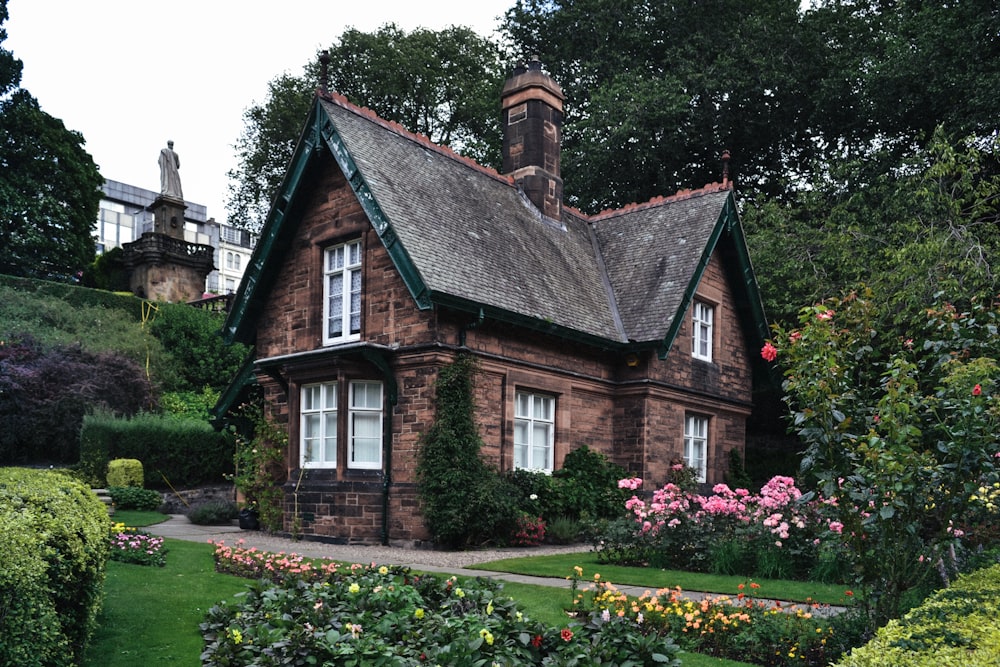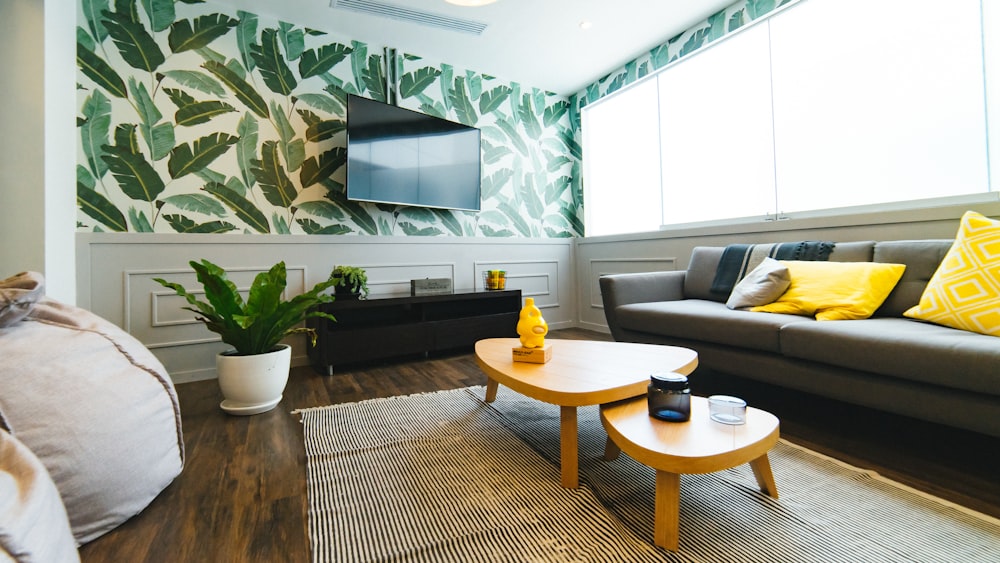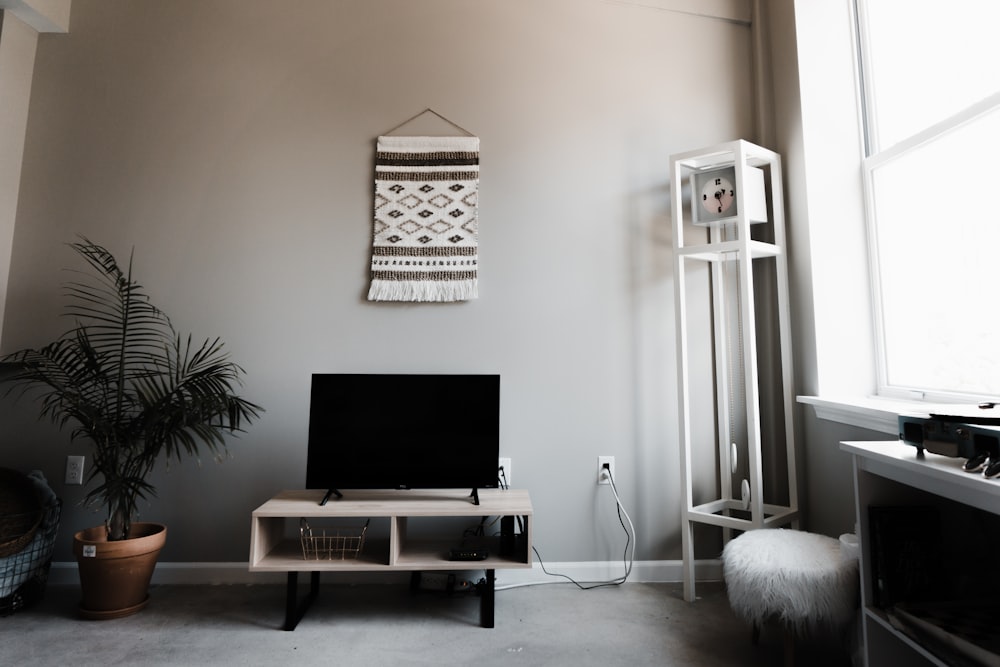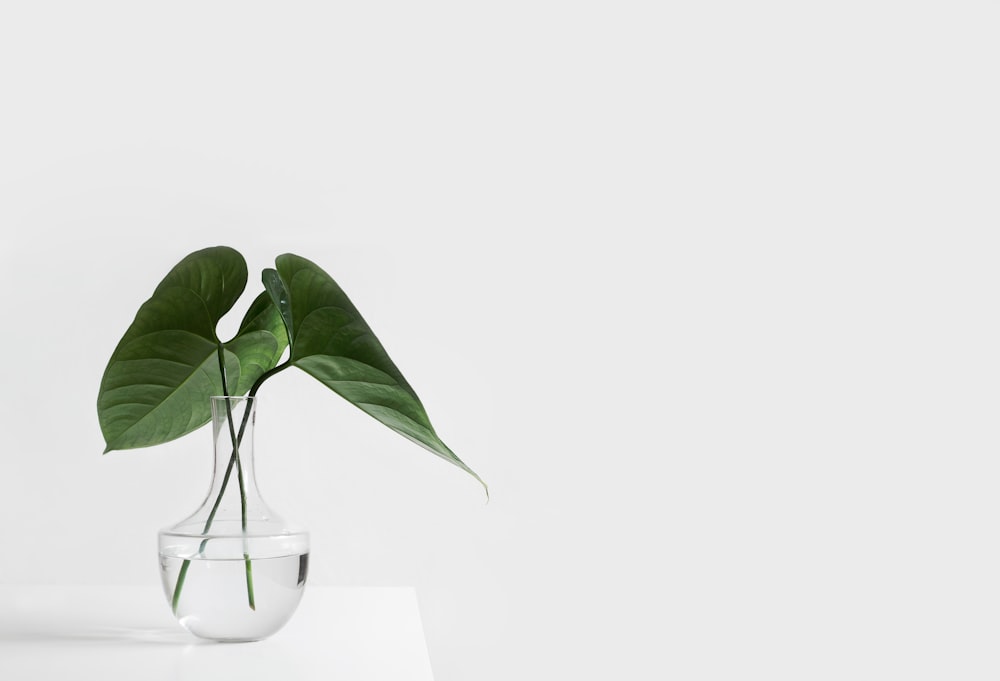simplicity
Industrial Minimalist Home Sleek Designs for Modern Living
Industrial Minimalist Home: Sleek Designs for Modern Living
In the world of interior design, the industrial minimalist style has been making waves for its unique blend of simplicity and sophistication. It’s a style that speaks volumes with its clean lines, open spaces, and emphasis on functionality. For those looking to create a home that exudes modern elegance while maintaining a sense of warmth, industrial minimalist design offers the perfect balance.
Embracing Clean Lines and Open Spaces
At the core of industrial minimalist design are clean lines and open spaces. These elements create a sense of airiness and freedom within a home, allowing each piece of furniture and decor to stand out in its own right. Picture a living room with a sleek, low-profile sofa against a backdrop of exposed brick walls and large, unadorned windows. It’s a space that feels inviting yet effortlessly chic, perfect for both relaxation and entertaining.
The Beauty of Raw Materials
One of the hallmarks of industrial minimalist design is the use of raw materials such as metal, wood, and concrete. These materials are celebrated for their natural beauty and durability, adding a sense of rugged elegance to any space. Imagine a dining table crafted from reclaimed wood paired with metal chairs, or a kitchen with concrete countertops and open shelving showcasing artisanal ceramics. These elements not only add visual interest but also tell a story of craftsmanship and authenticity.
Functionality Meets Style in the Kitchen
The kitchen is often considered the heart of the home, and in an industrial minimalist setting, it becomes a sleek and efficient workspace. Here, clean lines and minimalist design are married with high-functionality appliances and ample storage. Picture a kitchen with stainless steel appliances, matte black cabinetry, and open shelving to display stylish cookware. It’s a space that is both aesthetically pleasing and designed for practical use, making meal preparation a joy.
Creating Tranquil Bedrooms with Minimalist Flair
In the bedroom, industrial minimalist design creates a serene and tranquil retreat. Think of a bedroom with a platform bed featuring a simple, yet elegant, metal frame. Soft, neutral bedding and minimalistic nightstands complete the look, while a large, unadorned window allows natural light to filter in. It’s a space that encourages relaxation and restful sleep, free from clutter and distractions.
Industrial Minimalist Bathrooms: Simplicity in Design
The bathroom in an industrial minimalist home is a study in simplicity and sophistication. Here, clean lines and minimalistic design elements reign supreme. Imagine a bathroom with a sleek, freestanding bathtub, a floating vanity with vessel sinks, and matte black fixtures adding a touch of contrast. Large format tiles in shades of gray create a sense of understated luxury, while ample storage keeps the space clutter-free.
Bringing the Outdoors In with Industrial Minimalist Decor
Incorporating elements of nature into an industrial minimalist home adds warmth and character to the space. Picture large, potted plants placed strategically throughout the home, bringing a touch of greenery indoors. Natural fiber rugs, wooden accents, and textured throws and pillows
Serene Simplicity Minimalist House Interior for Living Rooms
Exploring Serene Simplicity: Minimalist House Interior for Living Rooms
Embracing Minimalism in Your Living Space
In the hustle and bustle of modern life, finding a serene sanctuary at home is invaluable. Minimalist house interior design offers a pathway to tranquility, focusing on the essentials and stripping away excess. Let’s delve into the art of creating a serene and stylish living room within a minimalist house.
Clean Lines and Uncluttered Spaces
At the heart of minimalist house interior design are clean lines and uncluttered spaces. Picture a living room adorned with sleek furniture featuring simple yet elegant silhouettes. A streamlined sofa, minimalist coffee table, and a few carefully curated decor pieces create an ambiance of understated sophistication.
Neutral Color Palettes: A Canvas of Calmness
Neutral color palettes are a hallmark of minimalist interiors, and for good reason. Soft hues of white, beige, and gray provide a soothing backdrop that allows the mind to relax. These colors also enhance the sense of space, making the living room feel open and airy.
Functional Furnishings for Practical Living
In a minimalist house, every piece of furniture serves a purpose. Opt for multifunctional pieces that offer both style and utility. A storage ottoman not only provides a place to rest your feet but also offers hidden storage for blankets or books. A sleek media console not only holds your entertainment essentials but also contributes to the room’s aesthetic appeal.
Bringing Nature Indoors: Greenery for Freshness
Introducing elements of nature into your minimalist living room adds a touch of freshness and vitality. Low-maintenance plants such as succulents or peace lilies breathe life into the space while enhancing the calming atmosphere. Place them strategically near windows to benefit from natural light.
Artful Minimalism: Curating Your Decor
In minimalist house interior design, less is more when it comes to decor. Select a few statement pieces that resonate with your style and personality. A striking piece of artwork, a sculptural vase, or a designer lamp can serve as focal points, adding character without overwhelming the simplicity of the room.
Maximizing Natural Light: Enhancing the Ambiance
Natural light is a key element in minimalist house interiors, creating a sense of warmth and openness. Opt for sheer curtains or blinds that allow sunlight to filter through, illuminating the space. This not only reduces the need for artificial lighting but also promotes a connection to the outdoors.
Texture and Layers: Adding Depth to the Space
While minimalist design often emphasizes clean surfaces, introducing texture adds depth and visual interest. Consider a plush area rug, textured throw pillows, or a cozy knit blanket draped over the sofa. These tactile elements create layers within the room, making it feel inviting and comfortable.
Simplicity in Entertainment: Tech Solutions
In a minimalist living room, technology blends seamlessly with the decor. Opt for sleek and minimalist entertainment units that integrate seamlessly into the space. Wall-mounted TVs, wireless speakers, and hidden wiring contribute to the streamlined aesthetic.
Decluttering for Peace of Mind
One of the core principles of
Coastal Serenity Minimalist Beach House Decor Delights
Embracing Coastal Serenity Through Minimalist Beach House Decor
Discovering Tranquility by the Shore
In the realm of coastal living, there exists a serene world where simplicity reigns supreme. Nestled along the sun-kissed shores, minimalist beach house decor invites inhabitants to embrace the tranquility of their surroundings. Here, amidst the gentle lull of the waves and the whisper of sea breeze, every element of design serves to amplify the beauty of the natural landscape.
Simplicity as a Design Philosophy
At the heart of minimalist beach house decor lies a profound appreciation for simplicity. Clean lines, uncluttered spaces, and a muted color palette create a sense of calmness and clarity. Each piece of furniture and every decor accent is carefully curated to evoke a feeling of serenity, allowing inhabitants to escape the chaos of daily life and reconnect with the essence of coastal living.
Bringing the Outdoors In
In a minimalist beach house, the distinction between indoor and outdoor spaces blurs effortlessly. Large windows and sliding glass doors invite natural light to flood the interiors, while offering panoramic views of the coastline beyond. Indoor plants and organic materials, such as wood and stone, further blur the boundaries, creating a seamless transition between the interior and the surrounding landscape.
The Beauty of Natural Materials
Minimalist beach house decor celebrates the inherent beauty of natural materials. Whitewashed walls, exposed beams, and hardwood floors create a backdrop of understated elegance, reminiscent of driftwood washed ashore. Linens and textiles in soft, earthy tones add warmth and texture, while woven rattan and jute accents infuse a touch of coastal charm.
A Palette Inspired by the Sea
The color palette of a minimalist beach house draws inspiration from the ever-changing hues of the sea and sky. Shades of azure blue, sandy beige, and seafoam green dominate the decor, evoking the tranquil beauty of the ocean. Accents of coral pink and sun-bleached white add a pop of brightness, mirroring the colors found in seashells and tropical blooms.
Functional Design with a Focus on Comfort
While minimalist in aesthetic, beach house decor prioritizes comfort and functionality above all else. Furniture is selected for its clean lines and timeless appeal, with an emphasis on quality craftsmanship and durability. Plush sofas, oversized armchairs, and cozy throws invite inhabitants to unwind and relax, while dining areas encourage gatherings and shared meals with loved ones.
Curating a Sense of Serenity
In a minimalist beach house, every design choice is made with the intention of cultivating a sense of serenity. Clutter is kept to a minimum, with storage solutions discreetly integrated into the architecture. Thoughtful decor accents, such as seashell collections and framed beach photographs, serve as reminders of the beauty that surrounds us, encouraging moments of mindfulness and gratitude.
Personalizing the Space with Intention
While minimalist beach house decor follows a less-is-more approach, it also leaves room for personal expression and individuality. Inhabitants are encouraged to infuse their space with meaningful touches—a handcrafted pottery vase, a vintage surfboard propped against the wall, or a
Sleek Sophistication Contemporary A-Frame Minimalism
Exploring Sleek Sophistication: Contemporary A-Frame Minimalism
Introduction:
Nestled amidst the vast expanse of architectural possibilities, contemporary A-frame minimalism stands out as a beacon of sleek sophistication. This unique architectural style marries the simplicity of minimalist design principles with the iconic silhouette of the A-frame structure, resulting in homes that exude modern elegance and functionality.
The Essence of Minimalism:
At the core of contemporary A-frame minimalism lies the essence of minimalism itself – the art of doing more with less. Minimalist design prioritizes clean lines, open spaces, and a deliberate reduction of clutter. It embraces simplicity as the ultimate form of sophistication, stripping away excess ornamentation to reveal the inherent beauty of basic geometric forms and natural materials.
Embracing Simplicity:
In the realm of A-frame architecture, embracing simplicity takes on a whole new dimension. The distinctive A-frame shape, characterized by its steeply sloping roofline that extends all the way to the ground, offers both form and function. This triangular structure not only provides structural integrity but also creates spacious interiors with soaring ceilings and abundant natural light.
Clean Lines, Clear Spaces:
One of the hallmarks of contemporary A-frame minimalism is its emphasis on clean lines and clear spaces. These homes are designed with a keen eye for symmetry and proportion, with every element serving a purpose. Walls are kept to a minimum, allowing for uninterrupted views of the surrounding landscape and fostering a sense of connection with the natural world outside.
Maximizing Efficiency:
Despite their minimalist aesthetic, contemporary A-frame homes are remarkably efficient in terms of both space and energy. The compact footprint of the A-frame design means that these homes can be built on smaller plots of land without sacrificing livability. Additionally, the steeply pitched roof allows for effective rainwater runoff and can accommodate solar panels for renewable energy generation.
Natural Materials, Timeless Elegance:
In keeping with the principles of minimalism, contemporary A-frame homes often make use of natural materials such as wood, stone, and glass. These materials not only lend a sense of warmth and texture to the interiors but also age gracefully over time, ensuring that the home retains its timeless elegance for years to come. From exposed beams to polished concrete floors, every surface tells a story of craftsmanship and authenticity.
Seamless Indoor-Outdoor Living:
Another key feature of contemporary A-frame minimalism is its emphasis on seamless indoor-outdoor living. Large windows and sliding glass doors blur the boundaries between interior and exterior spaces, allowing residents to fully immerse themselves in the beauty of their surroundings. Expansive decks and patios provide ample space for outdoor entertaining and relaxation, further enhancing the connection to nature.
Personalized Expression:
While contemporary A-frame minimalism is guided by a set of design principles, it also offers ample opportunities for personalized expression. Whether it’s through the careful selection of furniture and decor or the integration of sustainable technologies, homeowners can put their own unique stamp on their A-frame retreat. The result is a space that not only reflects their aesthetic preferences but also supports their
Simplify Your Space Embracing Minimalist Apartment Living
Embracing Minimalist Apartment Living
In a world where excess seems to be the norm, there’s a refreshing trend taking hold—the minimalist lifestyle. Embracing minimalism isn’t just about decluttering; it’s a philosophy that encourages us to simplify our lives, starting right at home. If you’re living in an apartment, this philosophy can be particularly transformative, helping you create a space that feels open, peaceful, and uniquely yours.
Creating Space to Breathe
One of the core principles of minimalist apartment living is the idea of creating space to breathe. This doesn’t mean having vast empty rooms, but rather ensuring that each item in your space has a purpose and brings you joy. Start by decluttering—go through your belongings and ask yourself if each item serves a necessary function or holds significant sentimental value. If not, it might be time to let it go. You’ll be amazed at how much lighter you feel when you’re surrounded only by the things you truly love and need.
Furniture with Purpose
When it comes to furnishing your minimalist apartment, think quality over quantity. Choose furniture pieces that serve multiple functions, such as a coffee table with hidden storage or a sofa that converts into a guest bed. This not only saves space but also ensures that each piece is used to its fullest potential. Opt for clean lines and neutral colors to create a sense of calm and continuity throughout your space.
The Magic of Multipurpose Storage
Storage is key in any living space, but it’s especially important in a minimalist apartment. Get creative with your storage solutions—think floating shelves, under-bed drawers, and wall-mounted hooks. These not only help keep clutter at bay but also add visual interest to your space. Baskets and bins can be stylish additions that serve a functional purpose, hiding away items that aren’t in use.
Letting in Light and Air
Natural light and fresh air can work wonders in a minimalist apartment, making it feel larger and more inviting. Keep window treatments simple to maximize light, opting for sheer curtains or blinds that can be easily opened during the day. If you’re lucky enough to have a balcony or patio, consider adding some potted plants to bring a touch of nature indoors.
Mindful Decor Choices
In a minimalist apartment, each decor item should be thoughtfully chosen to enhance the space without overwhelming it. Opt for a few statement pieces, such as a bold piece of artwork or a unique sculpture, rather than filling every surface with knick-knacks. Plants can also breathe life into a space, adding a pop of color and freshness.
Embracing Minimalist Mindfulness
Beyond the physical aspects of minimalist apartment living, there’s a deeper mindfulness that comes with the lifestyle. Take time each day to appreciate the simplicity of your space, whether it’s enjoying a cup of tea in your clutter-free kitchen or practicing yoga in your uncluttered living room. Embracing minimalism isn’t just about the aesthetics—it’s about creating a peaceful, intentional environment that supports your well-being.
A Sanctuary
Minimalist House Interior Design Clean Lines, Serene Spaces
Subheading: The Essence of Minimalist House Interior Design
When it comes to creating a home that embodies tranquility and simplicity, minimalist house interior design stands out. It’s not just about aesthetics—it’s a lifestyle choice that promotes clarity, calmness, and a sense of serenity. At the heart of this design philosophy are clean lines and uncluttered spaces, where every element serves a purpose. Let’s delve into the essence of minimalist house interior design and discover how it can transform your living spaces.
Subheading: Clean Lines for a Sense of Calm
One of the defining features of minimalist house interior design is the emphasis on clean lines. Furniture pieces, architectural elements, and decor items are characterized by simple, straight lines that create a sense of order and tranquility. Imagine walking into a living room where sleek, minimalistic sofas and tables greet you, allowing the eye to flow effortlessly across the space. These clean lines not only contribute to the aesthetics but also help in creating an environment free from visual clutter.
Subheading: Embracing Simplicity in Decor
In a minimalist home, every decor item has its place and purpose. Rather than filling shelves with an array of trinkets and accessories, the focus is on a select few pieces that make a statement. A single piece of art on a wall, a carefully chosen vase on a side table, or a strategically placed indoor plant can add warmth and character to the space without overwhelming it. By embracing simplicity in decor, each item becomes a deliberate choice, contributing to the overall harmony of the room.
Subheading: Maximizing Natural Light
Natural light is a key element in minimalist house interior design. Large windows, skylights, and glass doors are often incorporated to maximize the flow of natural sunlight into the home. This not only reduces the need for artificial lighting during the day but also creates a sense of openness and spaciousness. Picture a dining area bathed in the soft glow of morning light or a bedroom illuminated by the golden hues of sunset. Natural light becomes an integral part of the design, enhancing the serenity of the space.
Subheading: Functional Furniture for Practicality
In a minimalist home, furniture serves a dual purpose: to enhance the aesthetics of the space and to provide practical functionality. Multi-functional pieces, such as storage ottomans, modular sofas, and extendable dining tables, are favored choices. These items not only save space but also contribute to the uncluttered look of the room. Every piece of furniture is carefully selected based on its utility, ensuring that each room remains organized and efficient.
Subheading: Color Palette of Tranquility
The color palette plays a crucial role in minimalist house interior design, with neutral tones taking center stage. Shades of white, beige, gray, and soft pastels dominate the color scheme, creating a serene and soothing atmosphere. These hues serve as the backdrop for the clean lines and minimalist decor, allowing them to stand out without being overpowering. Additionally, pops of color may be introduced through accent
Mastering Minimalism Essential Living Tips for Simplicity
Unlocking the Secrets of Minimalist Living: Essential Tips for Simplicity
Understanding the Essence of Minimalism
Minimalism isn’t just about decluttering your space; it’s a lifestyle choice that prioritizes simplicity and intentionality. By embracing minimalism, you can create a more peaceful and fulfilling life. Here are some essential tips for mastering minimalism and simplifying your existence.
Decluttering Your Physical Space
The first step in mastering minimalism is decluttering your physical space. Take inventory of your belongings and identify items that no longer serve a purpose or bring you joy. Donate or discard these items to create a clutter-free environment. Remember, less is often more when it comes to creating a minimalist living space.
Embracing Mindful Consumption
Minimalism isn’t just about getting rid of things; it’s also about being mindful of what you bring into your life. Before making a purchase, ask yourself if the item aligns with your values and adds genuine value to your life. By practicing mindful consumption, you can avoid unnecessary clutter and live more intentionally.
Simplifying Your Daily Routine
Simplifying your daily routine is another key aspect of mastering minimalism. Look for ways to streamline your activities and eliminate unnecessary tasks or commitments. Focus on the essentials and prioritize activities that bring you joy and fulfillment. By simplifying your daily routine, you can free up time and energy for the things that truly matter.
Cultivating Gratitude
Gratitude is a fundamental aspect of minimalist living. Take time each day to reflect on the things you’re grateful for, whether it’s a roof over your head, a warm meal, or the love of friends and family. Cultivating gratitude can help shift your focus away from material possessions and towards the abundance that already exists in your life.
Creating a Zen-like Environment
Creating a zen-like environment is essential for mastering minimalism. Choose furniture and decor that are both functional and aesthetically pleasing, opting for clean lines and neutral colors. Incorporate elements of nature, such as plants or natural materials, to create a sense of tranquility and connection with the outdoors.
Practicing Mindfulness
Mindfulness is a cornerstone of minimalist living. By practicing mindfulness, you can become more aware of your thoughts, feelings, and behaviors, allowing you to make intentional choices that align with your values. Take time each day to meditate, journal, or simply be present in the moment. By cultivating mindfulness, you can live with greater clarity and purpose.
Fostering Meaningful Relationships
Minimalism isn’t just about simplifying your physical possessions; it’s also about fostering meaningful relationships. Invest time and energy in cultivating deep connections with friends and family, prioritizing quality over quantity. By surrounding yourself with people who uplift and inspire you, you can create a more fulfilling and enriching life.
Letting Go of Perfectionism
Perfectionism can be a major obstacle to mastering minimalism. Instead of striving for perfection, embrace imperfection and accept that life is messy and unpredictable. Let go of the need to control every aspect of your life and allow yourself to embrace spontaneity and adventure. By letting
“Minimalist Living Creating Harmony in Home Spaces”
Exploring Minimalist Living: Creating Harmony in Home Spaces
Embracing Simplicity:
Minimalist living is more than just a design trend; it’s a lifestyle choice that prioritizes simplicity, clarity, and intentionality. By paring down possessions and focusing on what truly matters, minimalist living allows individuals to create harmonious home spaces that promote peace of mind and well-being.
Streamlined Interiors:
At the heart of minimalist living is the concept of decluttering. This means eliminating unnecessary belongings and keeping only the essentials. In minimalist home spaces, you’ll find clean lines, uncluttered surfaces, and a sense of spaciousness that fosters tranquility and calm.
Functional Design:
Minimalist living isn’t just about aesthetics; it’s also about functionality. Every item in a minimalist home serves a purpose and contributes to the overall harmony of the space. Furniture pieces are carefully chosen for their utility and versatility, maximizing both form and function.
Mindful Consumption:
Central to the philosophy of minimalist living is the idea of mindful consumption. Rather than constantly chasing after the latest trends or accumulating material possessions, minimalist individuals focus on what truly adds value to their lives. This means being intentional about purchases and prioritizing quality over quantity.
Creating Balance:
In a world filled with noise and distractions, minimalist living offers a respite from the chaos. By simplifying their surroundings, individuals can create a sense of balance and harmony that extends beyond the physical environment and into all aspects of their lives.
Promoting Well-Being:
Minimalist living is closely tied to well-being. By eliminating clutter and excess, individuals can reduce stress and anxiety, improve focus and concentration, and cultivate a greater sense of inner peace. A minimalist home becomes a sanctuary—a place of refuge from the hustle and bustle of everyday life.
Environmental Impact:
Another important aspect of minimalist living is its positive impact on the environment. By consuming less and choosing sustainable options whenever possible, minimalist individuals can reduce their carbon footprint and contribute to a healthier planet for future generations.
Embracing Imperfection:
In a culture obsessed with perfection and constant striving, minimalist living offers a refreshing alternative. By embracing imperfection and letting go of the need to constantly acquire more, individuals can find contentment and fulfillment in the present moment.
Cultivating Gratitude:
Minimalist living encourages individuals to focus on what they have rather than what they lack. By practicing gratitude for the simple things in life, individuals can cultivate a greater sense of fulfillment and appreciation for the abundance that surrounds them.
Sustainable Lifestyle:
Ultimately, minimalist living is about creating a sustainable lifestyle that aligns with one’s values and priorities. By living simply and intentionally, individuals can cultivate a greater sense of harmony in their home spaces and in their lives as a whole. Read more about minimalism in home
Clean Lines, Clear Minds Minimalist Home Inspiration
Clean Lines, Clear Minds: Minimalist Home Inspiration
In the hustle and bustle of modern life, finding peace and tranquility within our homes has become more crucial than ever. With the minimalist movement gaining momentum, many are discovering the beauty of simplicity in home design. Clean lines, clear spaces, and a clutter-free environment can do wonders for the mind and soul. Let’s explore how minimalist home inspiration can transform not just our living spaces, but our entire mindset.
Embracing Simplicity: The Power of Minimalism
In a world filled with excess, minimalism offers a refreshing perspective. It’s not just about decluttering physical spaces; it’s about decluttering our minds. By stripping away the unnecessary, we create room for what truly matters. Minimalist home inspiration encourages us to simplify our surroundings, leading to a sense of calm and clarity.
Designing for Serenity: The Essence of Minimalist Interiors
Minimalist home design revolves around the principle of “less is more.” Clean lines, neutral colors, and uncluttered spaces are the hallmarks of this aesthetic. Every piece of furniture and decor serves a purpose, contributing to a sense of harmony and balance. By eliminating distractions, minimalist interiors promote focus and tranquility.
Decluttering the Mind: Finding Mental Peace Through Minimalism
Our physical environment greatly influences our mental state. A cluttered home can lead to a cluttered mind, filled with stress and anxiety. Minimalist home inspiration encourages us to simplify our surroundings, leading to a sense of mental clarity. By letting go of excess belongings and unnecessary distractions, we create space for peaceful thoughts and introspection.
Creating Functional Spaces: The Beauty of Minimalist Living
One misconception about minimalism is that it sacrifices functionality for style. However, minimalist design is anything but impractical. In fact, it prioritizes functionality above all else. Every piece of furniture and decor serves a purpose, enhancing both the aesthetic appeal and usability of a space. Minimalist home inspiration teaches us that simplicity and functionality can go hand in hand.
Fostering Mindful Living: Practicing Intentionality in Everyday Life
At its core, minimalism is about living with intention. It’s about being mindful of the things we bring into our lives and the impact they have. Minimalist home inspiration encourages us to make deliberate choices about our belongings, focusing on quality over quantity. By cultivating a mindful approach to living, we can create a home that reflects our values and priorities.
Embracing Imperfection: Finding Beauty in Minimalist Spaces
Contrary to popular belief, minimalism is not about achieving perfection. It’s about embracing imperfection and letting go of the need for excess. Minimalist home inspiration celebrates the beauty of simplicity, even in its flaws. A scuff on the floor or a worn-out piece of furniture tells a story, adding character to a space. By embracing imperfection, we create homes that are warm, inviting, and truly lived-in.
Cultivating a Minimalist Mindset: Beyond the Home
The principles of minimalism extend far beyond home design. It’s a mindset—a way of approaching life with simplicity, intention, and mindfulness. Minimalist home inspiration serves as a catalyst
Streamlined Serenity Minimalist Home Design Inspirations
Introduction
In today’s fast-paced world, the concept of minimalism has transcended being merely a design aesthetic; it’s become a way of life. “Streamlined Serenity: Minimalist Home Design Inspirations” delves into the ethos of minimalist design, exploring how it brings about a sense of tranquility and harmony to living spaces.
The Essence of Minimalism
Minimalism isn’t just about having empty rooms or stark white walls. It’s about stripping away the unnecessary clutter to reveal the essence of a space. By focusing on clean lines, simple forms, and functional design, minimalist homes exude a sense of calm and serenity.
Embracing Simplicity in Decor
One of the key principles of minimalist design is to embrace simplicity in decor. This means opting for furniture and decor pieces that serve a purpose while also contributing to the overall aesthetic of the space. Think sleek, unadorned furniture, paired with strategically placed accents that add visual interest without overwhelming the senses.
The Power of Neutral Color Palettes
Neutral color palettes are a hallmark of minimalist design. Whites, grays, and earth tones dominate minimalist interiors, creating a sense of openness and airiness. These subdued hues not only help to visually expand the space but also provide a soothing backdrop for everyday life.
Maximizing Natural Light
In minimalist homes, natural light is a prized commodity. Large windows, strategically placed skylights, and glass doors are used to flood interiors with sunlight, blurring the boundaries between indoor and outdoor spaces. This emphasis on natural light not only enhances the visual appeal of the home but also boosts mood and well-being.
Decluttering and Organization
At the heart of minimalist design lies the principle of decluttering and organization. Every item in a minimalist home serves a purpose, and excess clutter is ruthlessly eliminated. Clever storage solutions, such as built-in shelving and hidden storage compartments, help maintain a clean and clutter-free environment.
Furniture with Purpose
In a minimalist home, furniture isn’t just for show; it’s carefully chosen for its functionality and purpose. Multi-functional pieces, such as storage ottomans and convertible sofa beds, are favored for their ability to maximize space without sacrificing style. Each piece of furniture is thoughtfully selected to contribute to the overall harmony of the space.
Bringing Nature Indoors
Another key element of minimalist design is the incorporation of natural elements. Houseplants, natural fibers, and organic materials help to bring a sense of warmth and tranquility to minimalist interiors. Whether it’s a cluster of potted succulents or a statement-making indoor tree, greenery adds life and vitality to the space.
The Art of Editing
Perhaps the most challenging aspect of minimalist design is knowing when to stop. The art of editing is essential in creating a minimalist home that feels curated, not sparse. Each element should be carefully considered and edited down to its essential elements, allowing the true beauty of the space to shine through.
Conclusion
In a world filled with noise and distractions, minimalist design offers a welcome respite. By embracing simplicity, decluttering our spaces, and focusing on what truly










